The science behind marshmallows
Marshmallows have been around for centuries, believe it or not. Originally they were made using gum extracted from the root of the marshmallow plant – no surprises there – but what is surprising is that in ancient times marshmallows were used medicinally to cure sore throats and not as confectionary at all.
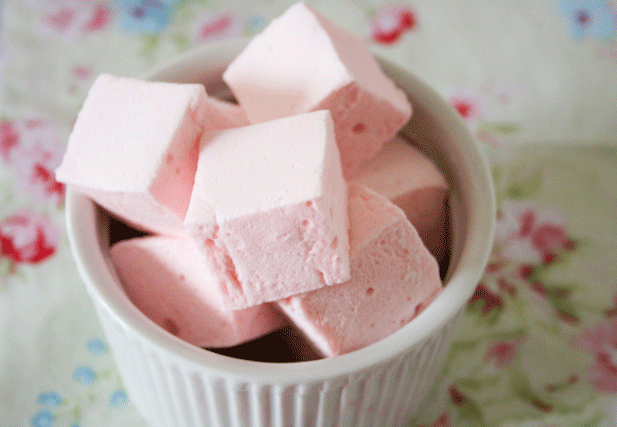 It was only in 19th century France that candy makers started adding egg whites and flavours like rose water to the marshmallow gum, resulting in something close to our modern day marshmallows. These days marshmallows don’t contain marshmallow root, but gelatine instead.
It was only in 19th century France that candy makers started adding egg whites and flavours like rose water to the marshmallow gum, resulting in something close to our modern day marshmallows. These days marshmallows don’t contain marshmallow root, but gelatine instead.
Marshmallow is a candy, which means it is made using sugar syrup of a specific concentration and, as you may remember from our fudge-making adventures, this concentration is determined by the temperature to which the syrup is boiled. For marshmallows, this is approximately 120°C (slightly more than fudge and slightly less than nougat). If you are an experienced candy maker, this is also known as the firm ball stage. While some candies are required to crystallize, marshmallow candies are not, as you can tell from their smooth texture.
 So shall we try to make marshmallows? We already know our ingredient list: sugar, water, egg whites and gelatine. Gelatine is a starch that absorbs water – in fact, it can hold up to a hundred times its weight in water – and it is this magic ingredient that produces the fluffy texture in marshmallows.
So shall we try to make marshmallows? We already know our ingredient list: sugar, water, egg whites and gelatine. Gelatine is a starch that absorbs water – in fact, it can hold up to a hundred times its weight in water – and it is this magic ingredient that produces the fluffy texture in marshmallows.
For the sugar syrup we’ll use:
1 and 2/3 cups sugar
½ cup and 1 tbsp water
2 tbsp golden syrup (this helps prevent the sugar syrup from crystallizing)
For the gelatine:
40g gelatine
½ cup and 1 tbsp water
For the meringue:
2 tbsp sugar
2 egg whites
Pinch of cream of tartar (this helps to stabilise the egg whites)
1 tsp vanilla essence
You will also need:
Some corn starch
A 23cm x 23cm square pan
A heavy-based saucepan (if your pan is too thin the syrup might burn)
A candy thermometer
An electric mixer
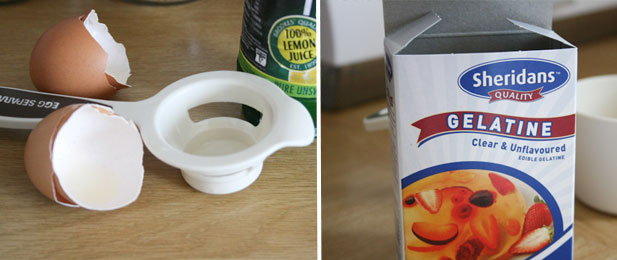 Method:
Method:
1. Grease your pan (with butter or cooking spray) and then sprinkle it with corn starch so the marshmallows don’t stick to it.
2. In a heavy-based saucepan, cook the sugar syrup ingredients to 120°C or until it reaches the firm ball stage.
3. In the mean time, put the water for the gelatine in a large bowl and sprinkle the gelatine on top. Mix the two together with a fork and set the mixture aside. It will turn into a solid mass.
4. Whisk the egg whites and cream of tartar together until stiff peaks form (for tips on whisking egg whites, you can refer back to The Science Behind Pavlova). Then add the sugar and whisk until the mixture is stiff and glossy.
5. When the sugar syrup reaches 120°C, remove it from the heat and add the gelatine. It will bubble quite vigorously, watch out. Whisk the mixture until the gelatine is dissolved.
6. Slowly add the syrup to the egg whites, while whipping at low speed. Then turn up the mixer speed and whip until the mixture has cooled down and ribbons start to form (about 5 minutes). Don’t let the mixture cool completely though, or you won’t be able to spread it. You can also add the vanilla essence and any other colouring or flavouring you like at this point.
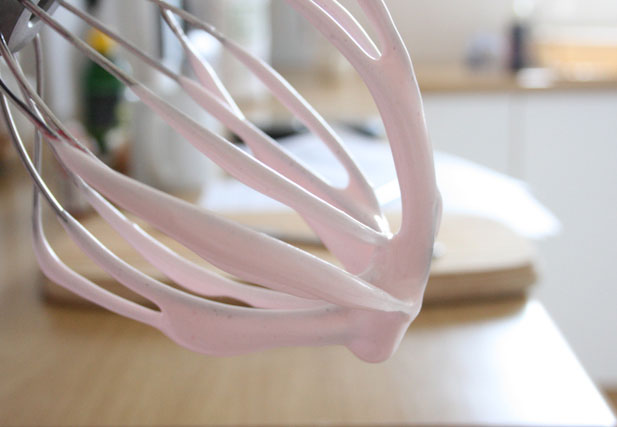 7. Pour the mixture into the pan and let it set at room temperature for a few hours. When it has set, you can remove the entire block of marshmallow from the pan and cut it into squares. If the marshmallows are sticky, you can coat them in a small amount of corn flour.
7. Pour the mixture into the pan and let it set at room temperature for a few hours. When it has set, you can remove the entire block of marshmallow from the pan and cut it into squares. If the marshmallows are sticky, you can coat them in a small amount of corn flour.
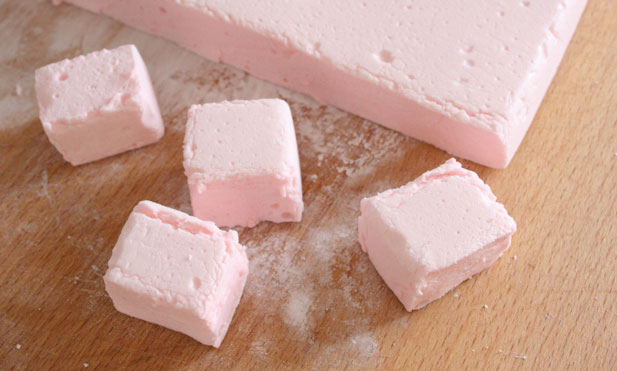 Enjoy! And next time you can experiment by adding different flavours and/or colours to your mallows. Download print-friendly version of this recipe.
Enjoy! And next time you can experiment by adding different flavours and/or colours to your mallows. Download print-friendly version of this recipe.
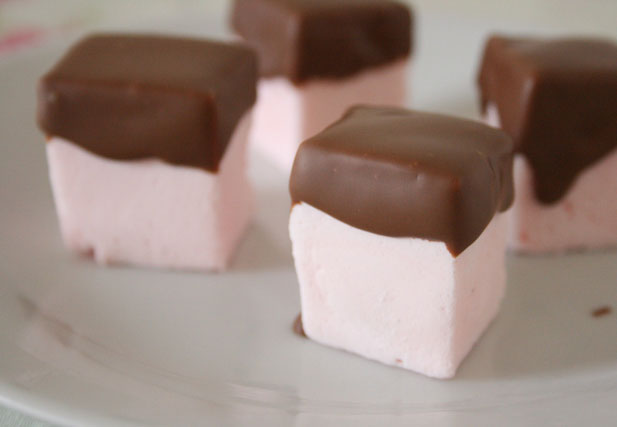 Do marshmallows dipped in chocolate sound good to you?
Do marshmallows dipped in chocolate sound good to you?
More in the Science Behind series:
The science behind pavlova
The science behind fudge
The science behind chocolate chip cookies
The science behind cupcakes
The science behind nougat
The science behind crème brûlée
